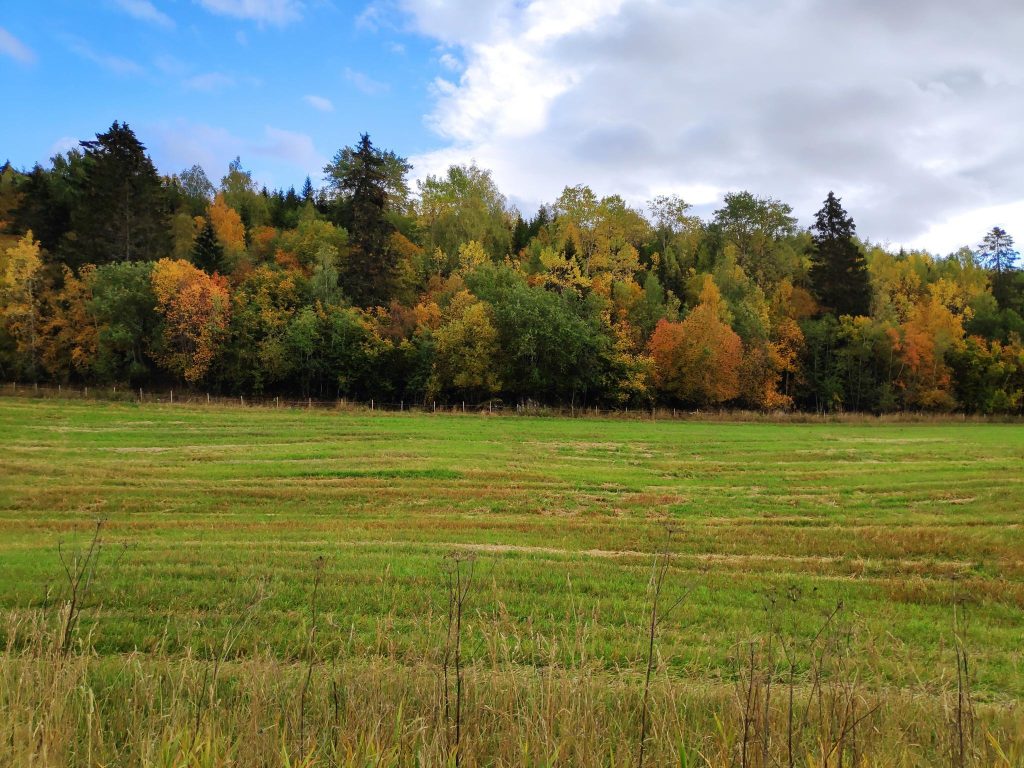
A while ago my daughter asked me if the trees here were starting to change colour yet and though the answer at the time (about the middle of September) was “no”, this blog is an answer to her question. The pictures were taken on the 1st of October, 2021, either on our own lot or on my walk up to a local dairy to buy milk.
I love the different seasons we have where we live. There are four distinct seasons and each has its own characteristics. Fall, or autumn, is when the nights get cooler, some of the trees loose their leaves and most flowers have gone to seed. Where we live there are often storms with a lot of wind and rain. There is also less and less daylight each day until we get to the winter solstice. Geese are flying south and other migratory birds disappear for a few months.
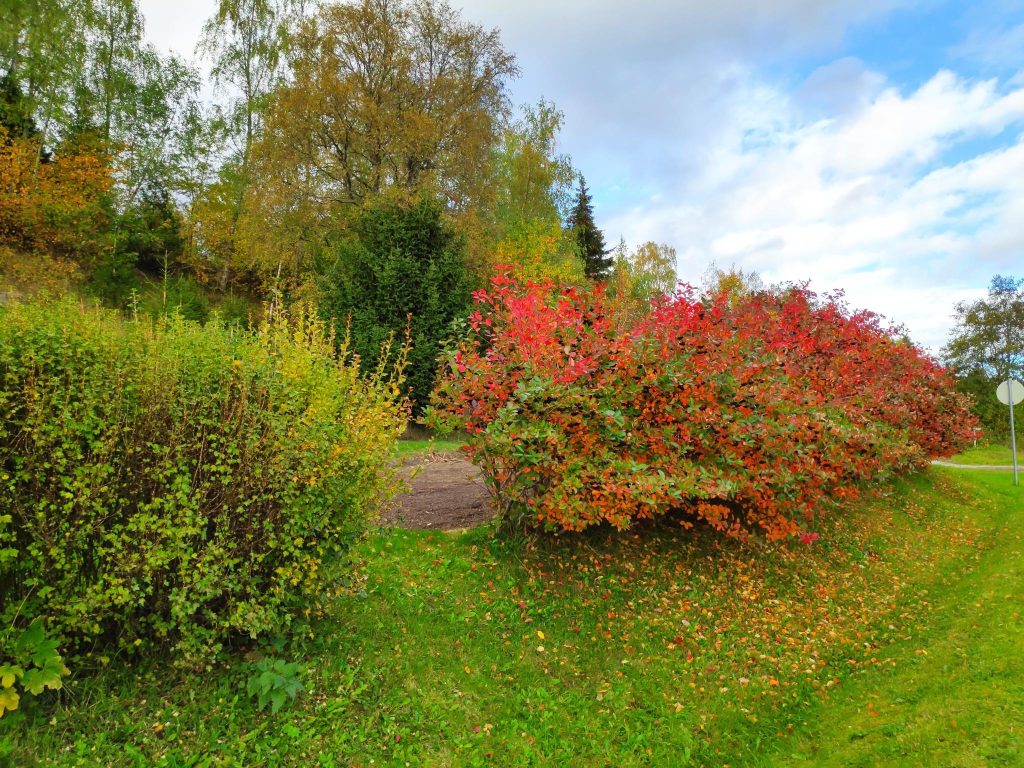
Meteoriologists in Norway have their own definition of fall: “Når døgnmiddeltemperaturen er mellom 0 og 10 grader og temperaturtendensen er fallende gjennom perioden, da er det høst, sier klimaforsker Stein Kristiansen ved Meteorologisk institutt.” (source) – “When the average daily temperature is between 0 and 10 degrees Celsius, and the temperatures are generally falling, then it is fall/autumn, says climate researcher Stein Kristiansen from The Norwegian Meteorological Institute (website).
This year we have not been below 4 degrees Celsius at night and daytime temperatures have been between 10 and 15 degrees Celsius. I think the amount of daylight affects trees too. Many smaller plants die off once their seeds have been made. If we have a very dry summer, I notice that the birch trees will lose leaves even in July or August to save water.
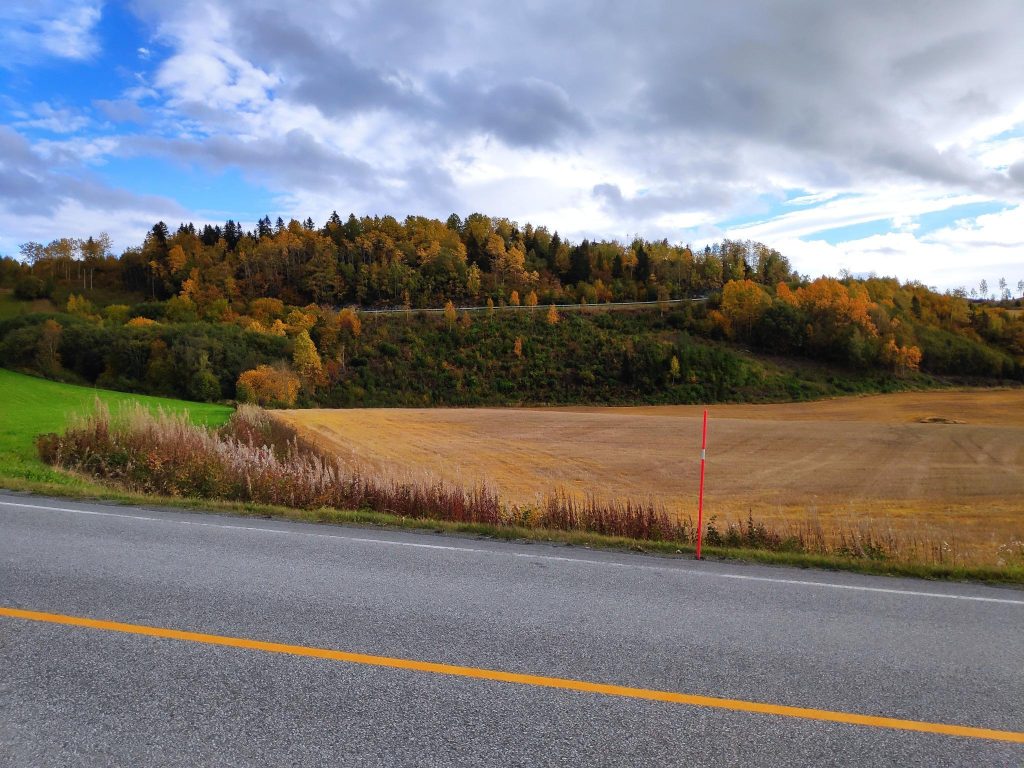
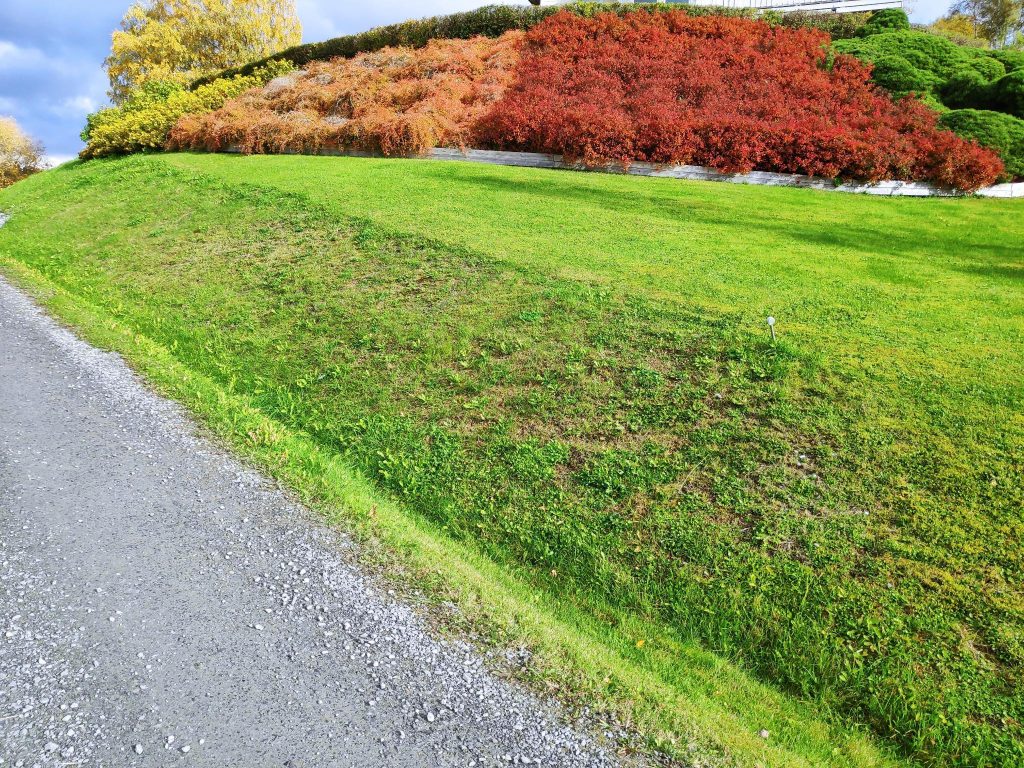
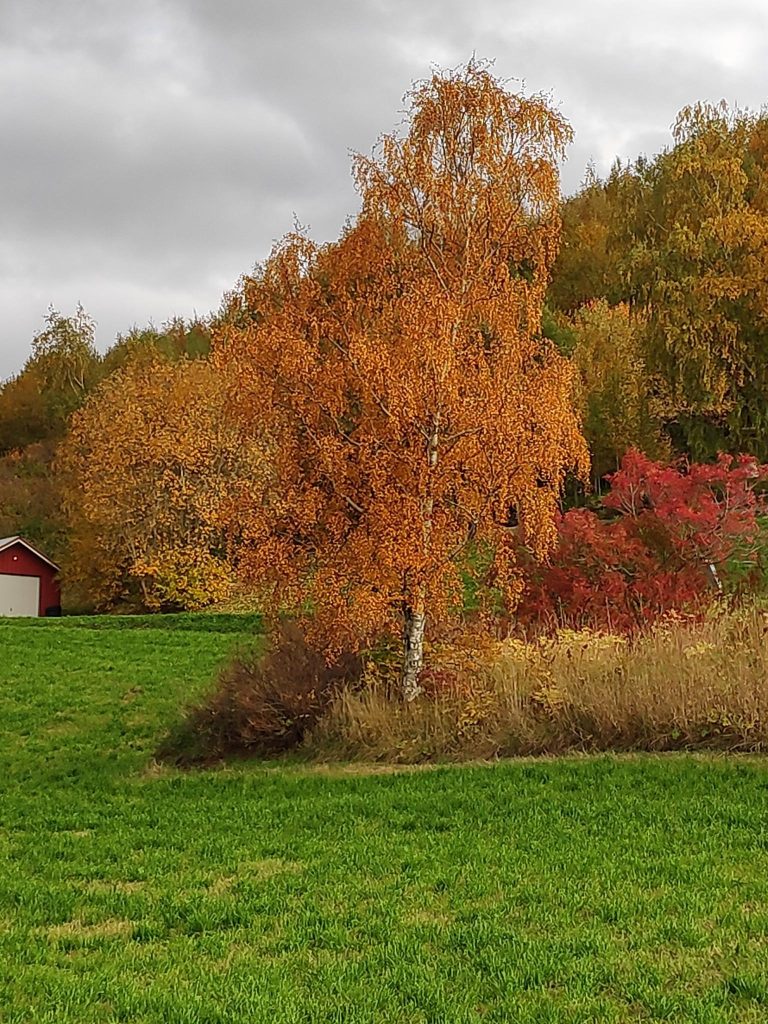
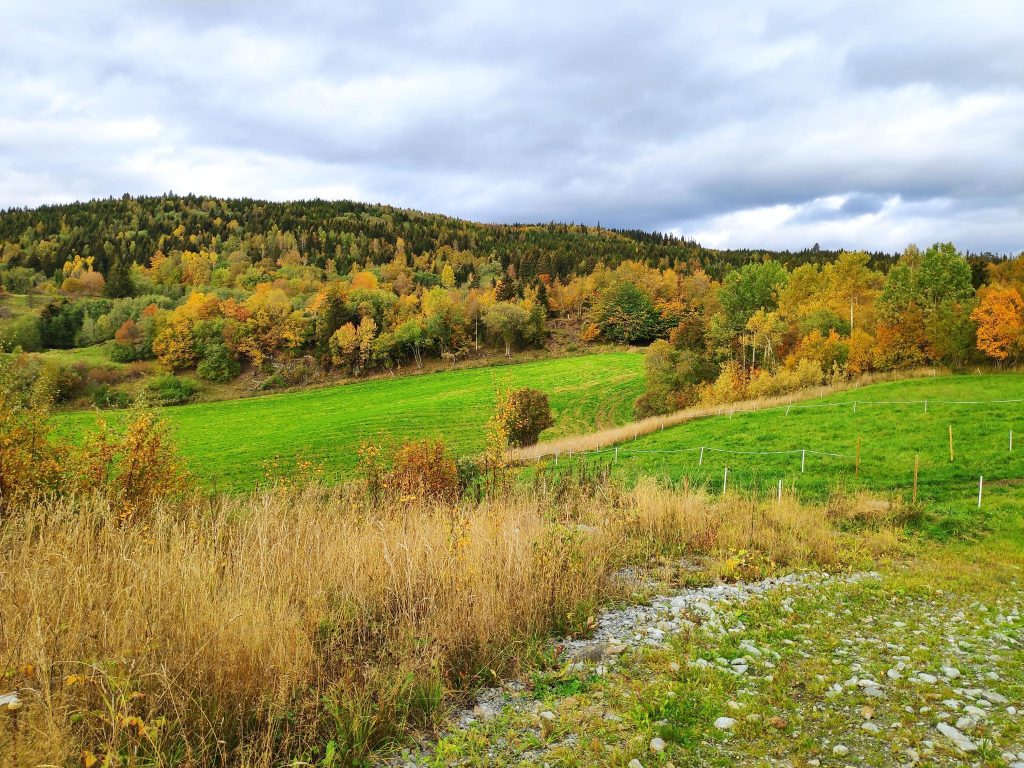
However, I was also surprised to see some flowers still blooming.
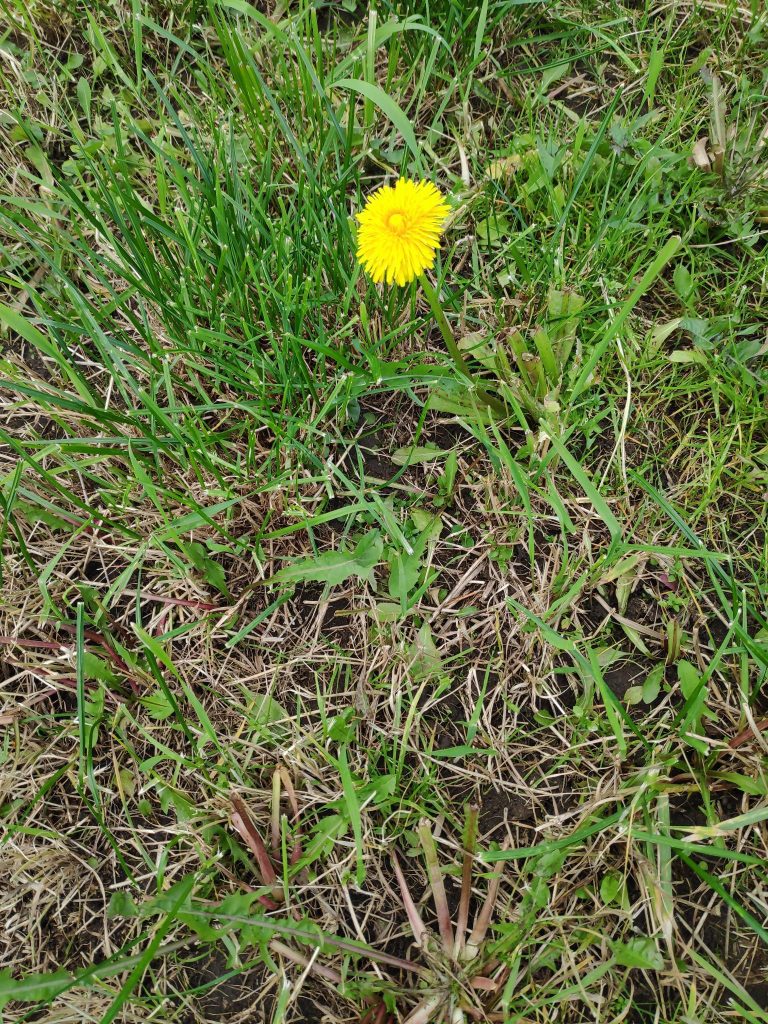
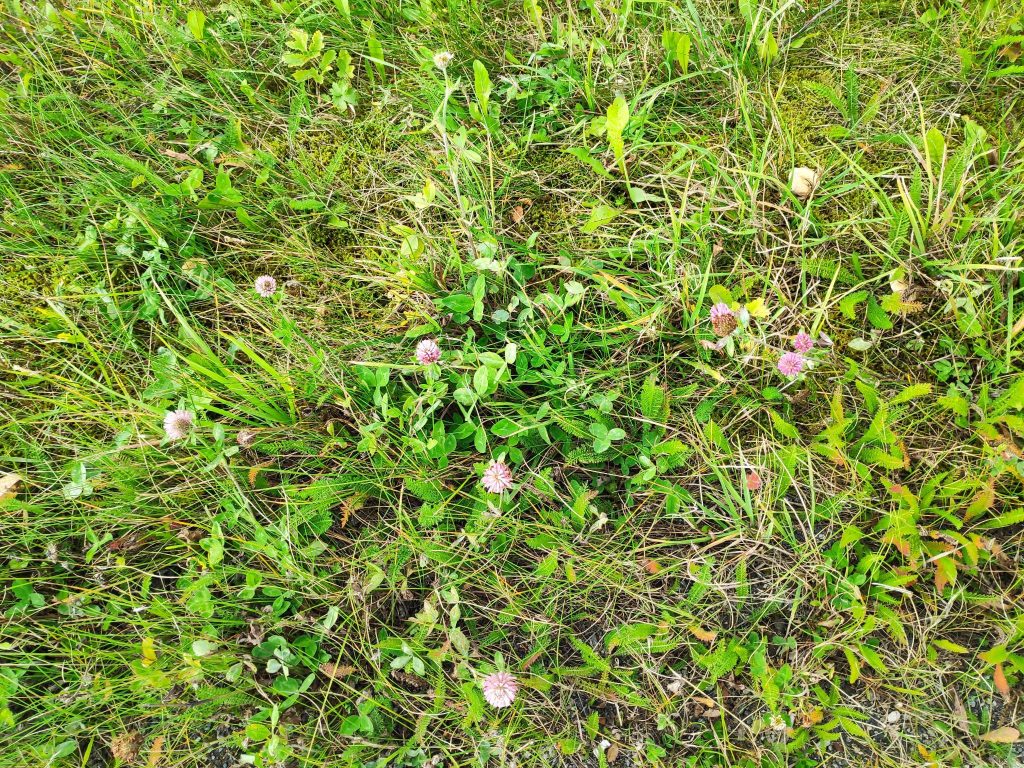
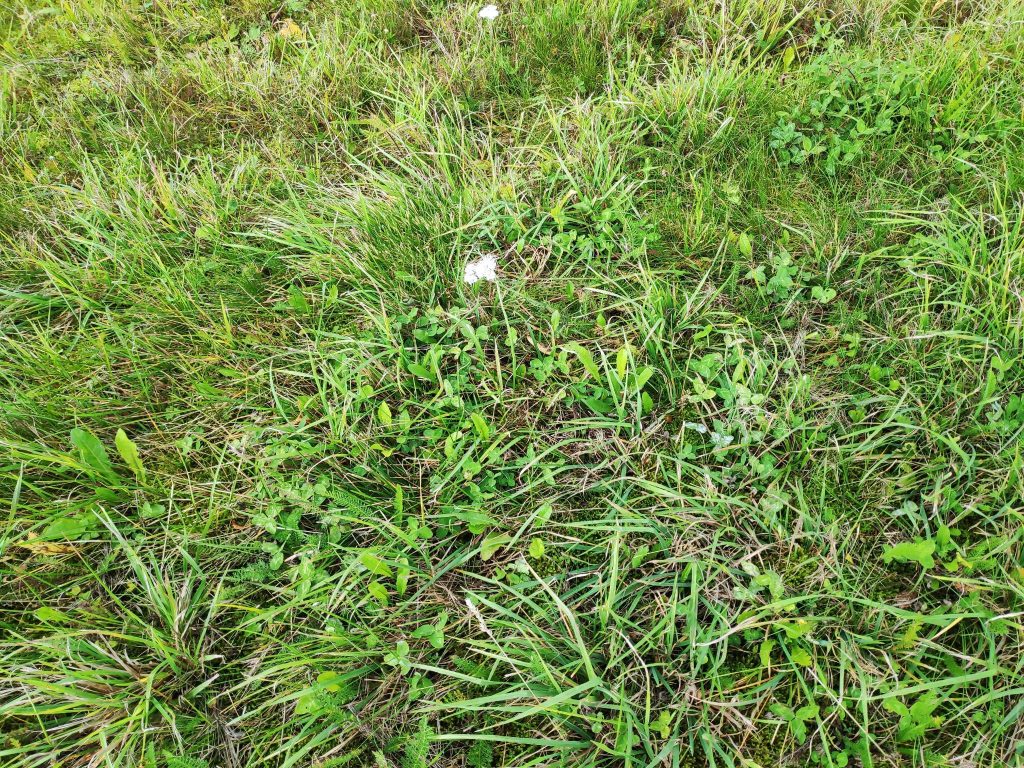
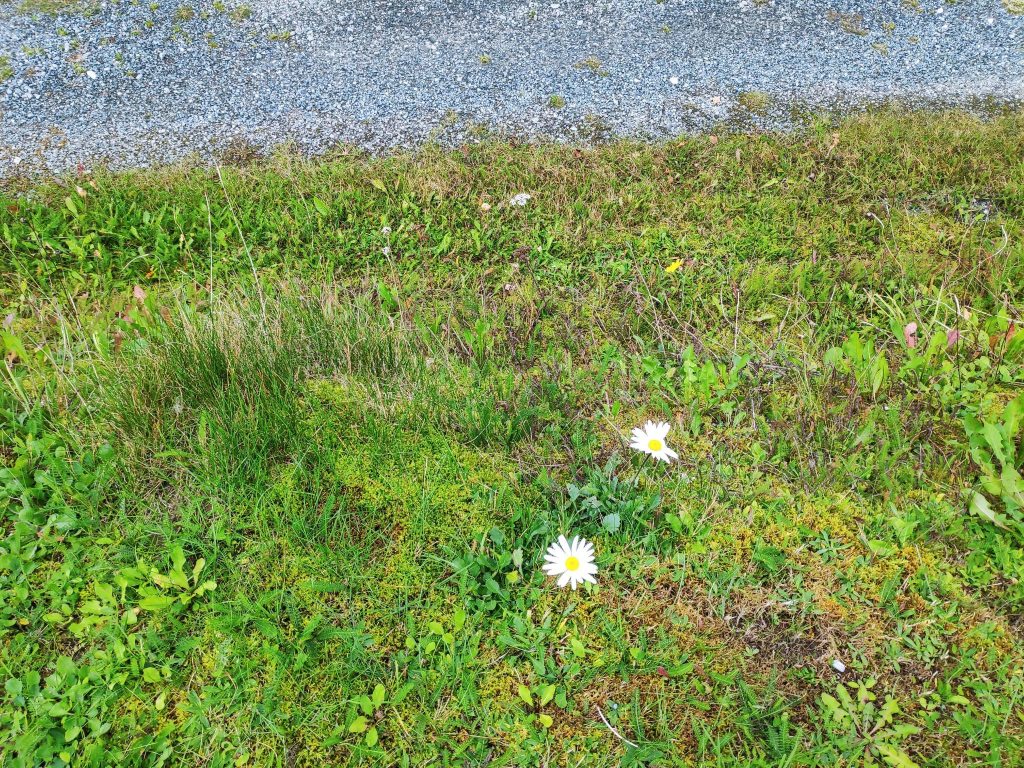
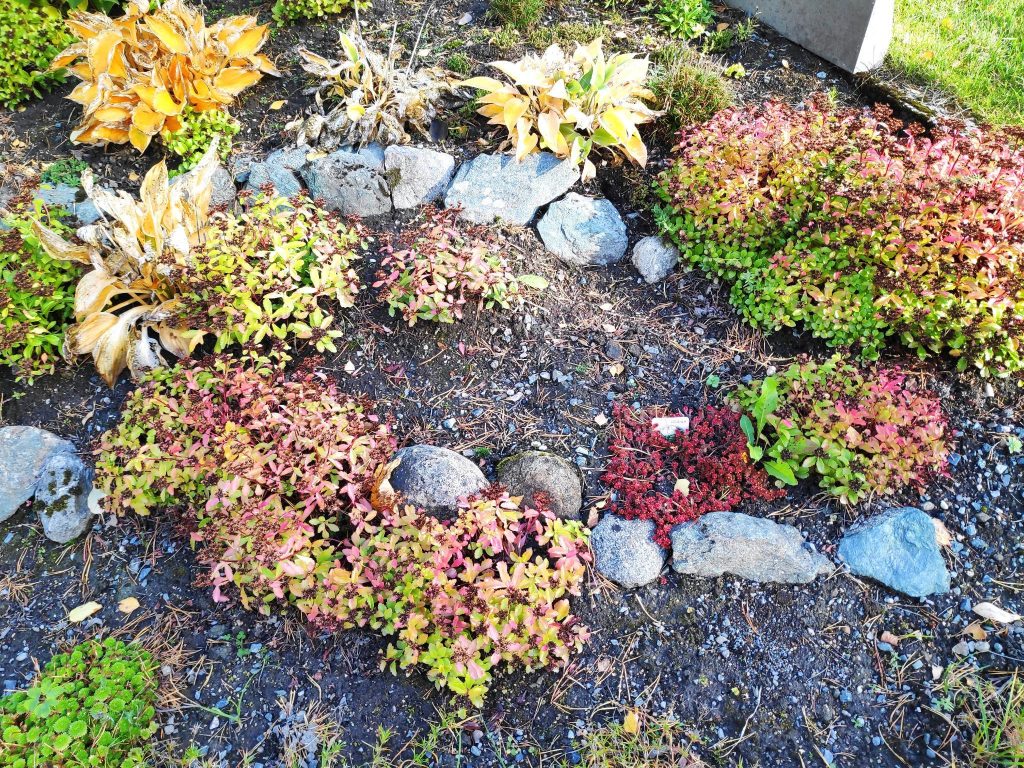
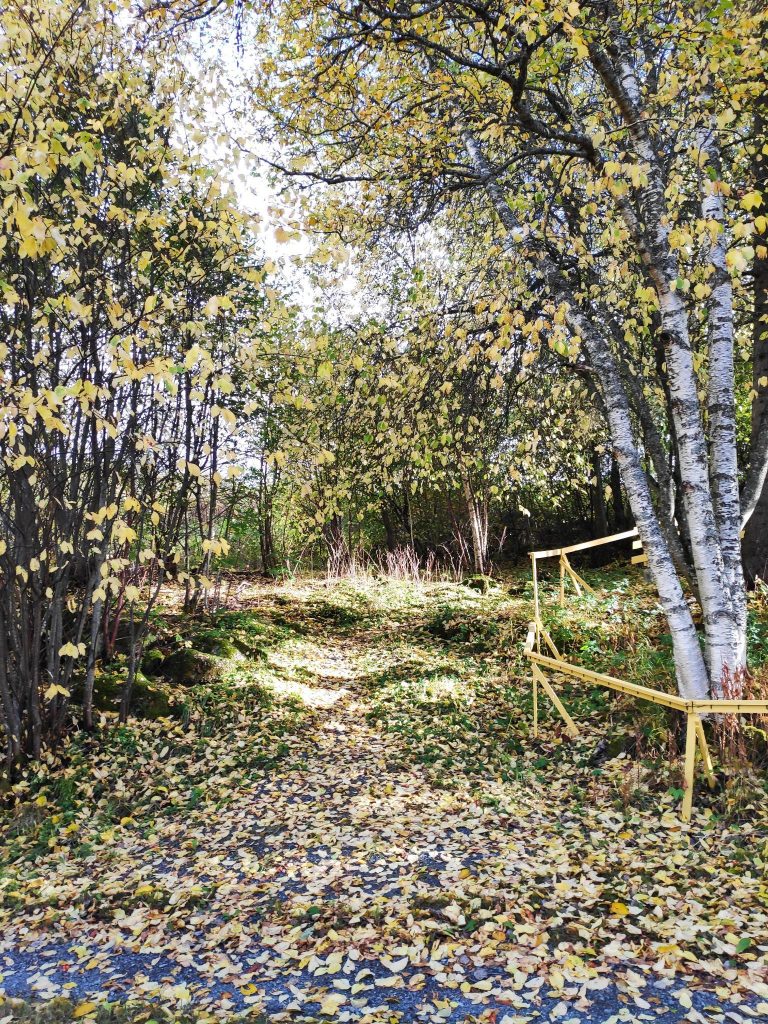
We are only at the beginning of fall now. The next two months will show even more changes in nature around us, as the days grow shorter and the temperature drops. More trees will change colour. More leaves will fall, as not all trees lose their leaves at the same time. While the days are still nice, I will continue to enjoy walks several times a week.
